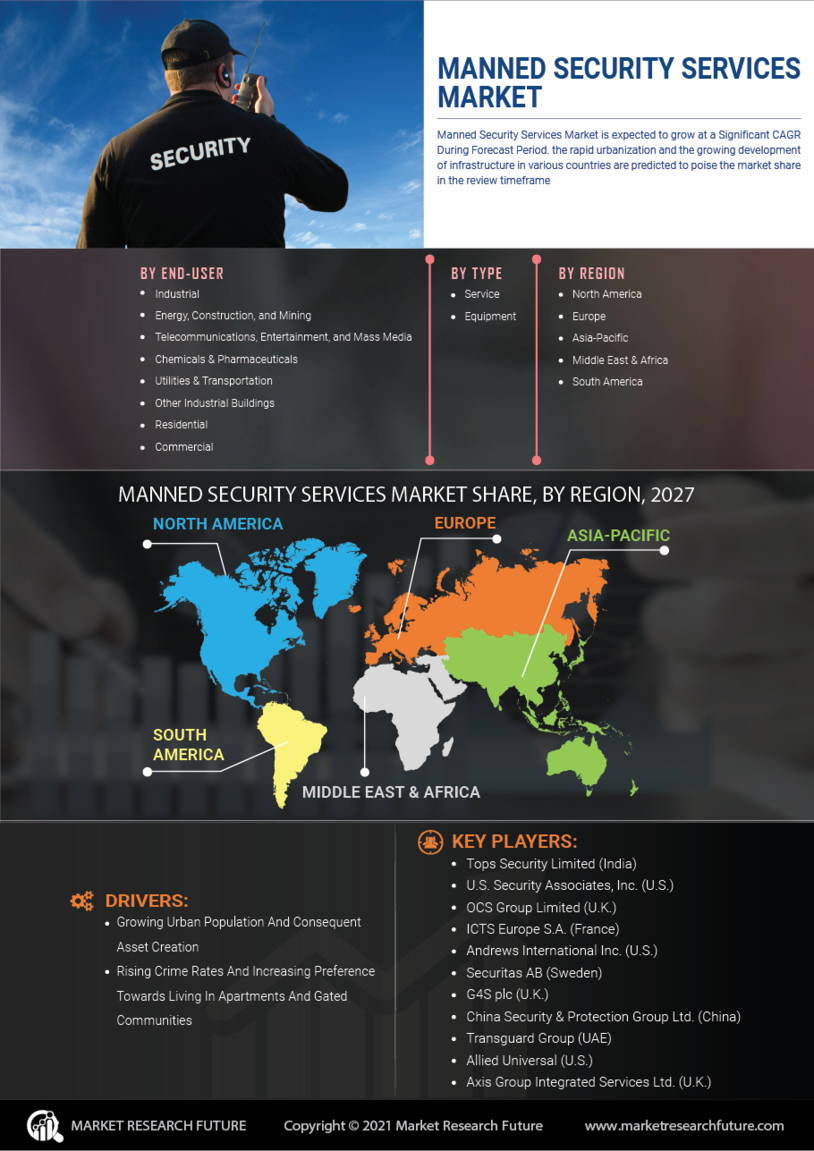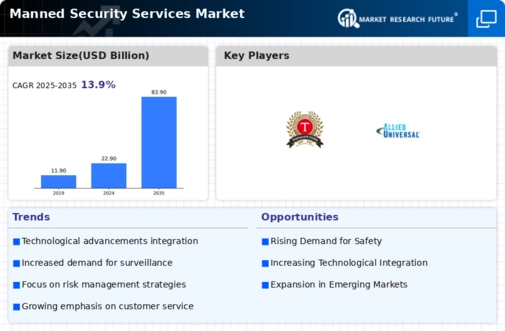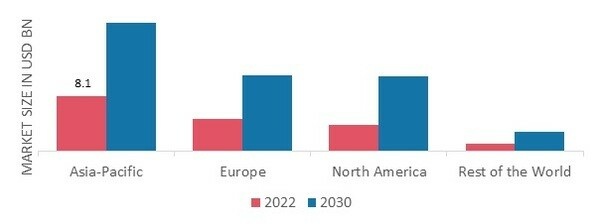Regulatory Compliance
The Global Manned Security Services Market Industry is also shaped by stringent regulatory requirements across various sectors. Governments and regulatory bodies are implementing laws that mandate specific security measures, particularly in industries such as finance, healthcare, and critical infrastructure. Compliance with these regulations necessitates the hiring of professional security personnel, thereby driving demand for manned security services. Organizations that fail to adhere to these regulations may face severe penalties, further incentivizing the adoption of manned security solutions. This regulatory landscape is likely to bolster the market's growth, as businesses prioritize compliance and risk management.
Rising Security Concerns
The Global Manned Security Services Market Industry is experiencing growth driven by increasing security concerns across various sectors. With rising incidents of crime and terrorism, businesses and individuals are prioritizing safety measures. In 2024, the market is projected to reach 22.9 USD Billion, reflecting a heightened demand for manned security services. This trend is particularly evident in urban areas, where crime rates tend to be higher. As organizations seek to protect their assets and personnel, the reliance on manned security services is likely to intensify, indicating a robust market trajectory.
Market Growth Projections
The Global Manned Security Services Market Industry is poised for substantial growth in the coming years. Projections indicate that the market will reach 22.9 USD Billion in 2024 and is expected to expand to 83.9 USD Billion by 2035. This growth trajectory suggests a compound annual growth rate of 12.51% from 2025 to 2035. Such figures reflect the increasing recognition of the importance of security services across various sectors, as organizations prioritize safety and risk management. The market's expansion is likely to be influenced by various factors, including technological advancements and regulatory compliance.
Technological Advancements
Technological innovations are significantly influencing the Global Manned Security Services Market Industry. The integration of advanced surveillance systems, biometric access controls, and real-time monitoring solutions enhances the effectiveness of manned security personnel. These technologies not only improve response times but also provide valuable data analytics for security assessments. As businesses increasingly adopt these technologies, the demand for trained security personnel who can operate and manage these systems is expected to rise. This synergy between technology and manned security services may contribute to the market's projected growth, potentially reaching 83.9 USD Billion by 2035.
Growing Demand from Retail Sector
The retail sector is a significant contributor to the Global Manned Security Services Market Industry. As retail businesses face challenges such as theft and vandalism, the demand for manned security services is on the rise. Retailers are increasingly recognizing the value of having trained security personnel on-site to deter criminal activity and ensure customer safety. This trend is particularly pronounced in high-traffic areas and large retail establishments. As the retail sector continues to evolve, the reliance on manned security services is expected to grow, further driving market expansion.
Increased Investment in Infrastructure
Investment in infrastructure development is a key driver of the Global Manned Security Services Market Industry. As countries around the world enhance their infrastructure, including transportation, energy, and public facilities, the need for security services becomes paramount. Manned security personnel are essential for safeguarding these assets against potential threats. The ongoing expansion of urban areas and the construction of new facilities create opportunities for security service providers. This trend is expected to contribute to the market's growth, with projections indicating a compound annual growth rate of 12.51% from 2025 to 2035.


 Source Secondary Research, Primary Research, Market Research Future Database, and Analyst Review
Source Secondary Research, Primary Research, Market Research Future Database, and Analyst Review
